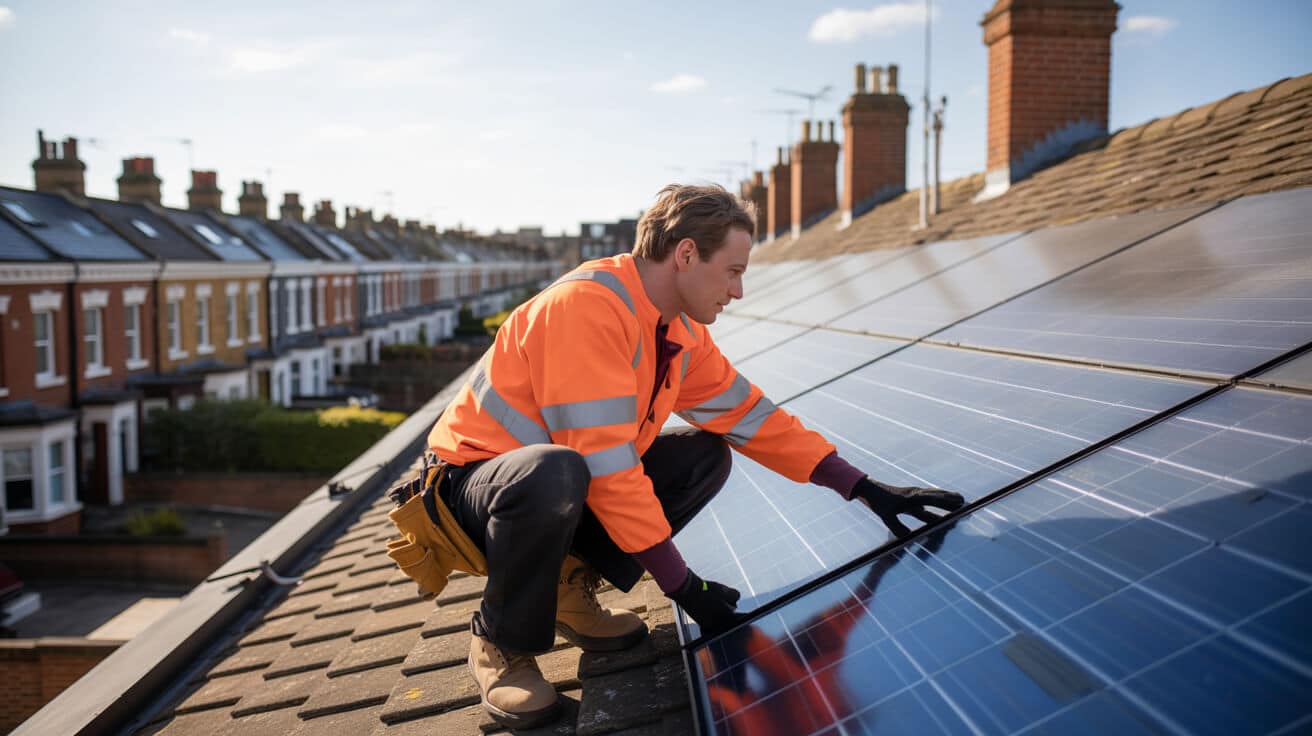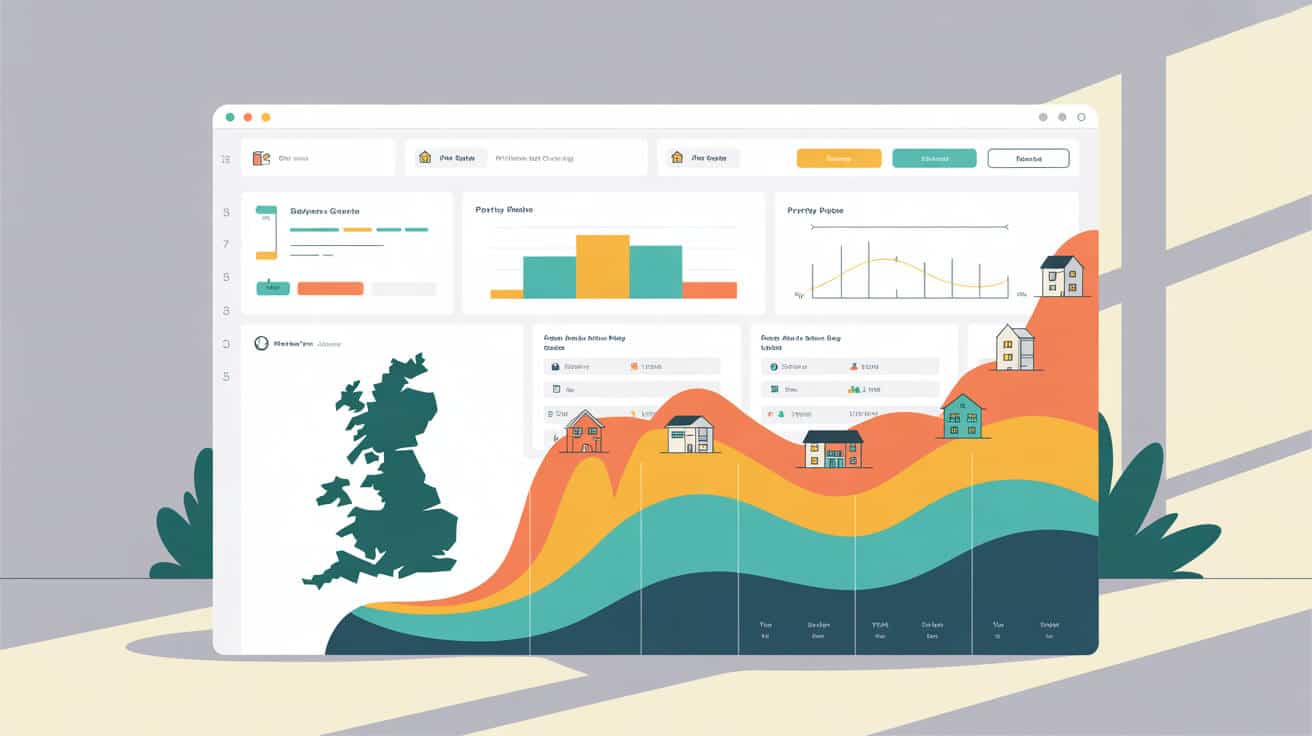 10 Eco Friendly Upgrades To Improve Your Property’S Epc Rating
10 Eco Friendly Upgrades To Improve Your Property’S Epc Rating

How Can You Rapidly Improve Your Property’s EPC Rating With Eco-Friendly Upgrades?
Every owner wants their property to run efficiently, hold its value, and attract the right tenants or buyers. The Energy Performance Certificate (EPC) rating isn’t just an academic grade—it’s a direct lever on your costs, legal standing, and future sale prospects. And as regulations tighten, sitting on the fence is a losing move.
Every month that energy slips away unnoticed, your property’s value—and your cashflow—quietly erode.
A weak EPC drains your wallet every quarter through higher utility bills and exposes you to growing fines as the 2025 EPC law deadline approaches in England and Wales. Yet, the right sequence of eco-friendly upgrades can lift your property to band E or better, often within weeks, not years. The trick? Think practical, not flashy. Target the measures surveyors value most, lock in compliance, and start seeing direct savings with minimal disruption.
Why the rush? As government, lenders, and tenants put EPC scores centre stage, your property’s rating is now a reputational risk—and a profit driver. Owners who only react under pressure pay more, rush through low-value upgrades, or get caught by urgent lettings voids. By acting early and following a proven upgrade path, you can spend less to gain more.
Modern EPC rules also reward a whole-building approach: bundling several improvements (even modest ones) multiplies their impact, pushes you up a band, and future-proofs your asset against the next wave of regulation.
Which Eco-Friendly Upgrades Offer the Fastest EPC Gains With the Least Disruption?

Not all upgrades move the EPC dial equally, and the fastest EPC wins are often overlooked for want of a “bigger” solution. Based on professional experience across thousands of UK homes, these ten upgrades reliably deliver the most rapid uplift for the least hassle:
1. Loft and Roof Insulation: Top-Tier Return, Minimal Mess
Most heat escapes up and out. Upgrading or topping up loft insulation—especially if current levels are below 270mm—typically delivers a 13–15 point SAP uplift (London EPC). Choose eco-friendly fillers like recycled wool or cellulose; they’re robust, long-lasting, and often grant-eligible.
Installation usually requires less than a day and causes no upheaval inside living areas. Expect actual energy bill savings (£200–£340/year) alongside a warmer, more comfortable home.
Tip: Sidewall insulation complements loft works; lateral heat loss is real.
Insulation goes in quietly, but the savings speak for themselves from your first bill.
2. Cavity and Solid Wall Insulation: Silent, Powerful Gains
Homes with cavity walls (usually built after 1920) can see a big EPC bump with injected mineral wool or bead insulation. For solid-wall period properties, sustainable options like internal cork, wood fibre, or sheep’s wool can transform comfort and compliance, provided they’re installed by specialists who understand moisture management (HomeLet).
Typical payback: 2–5 years, especially with grants. The disruption is often overhyped—modern techniques minimise dust and drying waits.
3. Underfloor Insulation: The Quick Heat Saver
Period homes, and anywhere with a suspended timber floor, lose up to 15% of their heat through the floorboards. Adding natural fibre batts between joists (access via a cellar or removable panels) plugs this gap. Combine with thorough draught-proofing for extra impact (Build Greener).
Professional tip: Most jobs take a day’s work and don’t require you to empty rooms.
What Impact Do Modern Windows, Doors, and Draught Sealing Have on EPC Scores?

Your building envelope holds the key to both comfort and compliance. Old, single-glazed windows or leaky doors are silent EPC killers, but you don’t have to go full replacement mode for results.
Double- and triple-glazed windows with low-emissivity coatings, especially in FSC timber or recycled aluminium frames, deliver robust gains in both SAP and day-to-day comfort. For heritage buildings, internal secondary glazing does the job without harming period looks.
One small draught in a doorway or window can undo a thousand pounds of insulation investment.
Fully sealing windows and external doors (using modern seal kits or expert fitters) stops heat loss before it starts. Surveyors want to see evidence of effective draught management at every inspection (Build Greener). Even new doors can disappoint if their seals are subpar.
Don’t overlook: Letterboxes, loft hatches, and pipe penetrations. Draught excluders and brush seals are cheap but impactful.
Professional draught-proofing usually pays for itself within 12 months, and instantly improves your property’s “feel” for tenants.
Windows, Doors & Draught Sealing at a Glance
| Upgrade | Benefit | Quick Win |
|---|---|---|
| New Glazing | SAP point increase | Medium–High |
| Draught Excluding | Heat retention | Very High |
| Door Upgrade | Security + SAP lift | High |
By securing the envelope first, every pound you invest downstream (in heating, for example) has greater impact.
Are Modern Heating Systems Like Heat Pumps and Smart Controls Worthwhile for Fast EPC Progress?

Heating technology has leapt forward—and so have grant schemes. Choosing between a full system upgrade and strategic smart controls depends on budget, timeline, and building fabric. Both routes offer clear wins.
Heat Pumps: Rapid Efficiency, Ongoing Support
Modern air- and ground-source heat pumps routinely convert 1kWh of electricity into 3–4kWh of heat, delivering 300%+ efficiency in the right home. Incentives such as the Boiler Upgrade Scheme mean the upfront cost bites less than before, and system design can often reuse your existing radiators once the building envelope has been improved (Energy Saving Trust).
Must-do: Arrange a pre-instal survey to confirm wall/floor insulation is adequate—poor building fabric blunts heat pump returns.
Smart Heating Controls: The Fastest EPC Tech Lift
Smart thermostats, programmable TRVs, and room-by-room controls aren’t just gadgetry—they drive real reductions (up to 10% energy savings) across all heating systems (My Green Pod). EPC assessors credit control tech at every visit.
Smart controls are the no-drama shortcut to higher efficiency—they pay you back every heating cycle.
For landlords or time-poor owners, smart controls are a “fit today, benefit tonight” option—there’s no need to replace the boiler to start gaining points.
Can Simple Lighting and Appliance Swaps Really Improve Your EPC Score?

The short answer: absolutely. Lighting choices and appliance ratings collectively influence both your bill and your EPC band. Best of all, these upgrades are instant, affordable, and non-disruptive.
Swapping every bulb for LEDs slashes usage by up to 80% and adds a visible compliance tick. EPC inspectors regularly document this as a positive—that room-by-room adoption is seen as a sign of diligent ownership (Green Living Blog).
Don’t overlook the power of small wins—changing 10 bulbs can move you closer to compliance than a big-ticket upgrade.
Modernise appliances gradually, focusing first on big consumers: fridge-freezers, washing machines, tumble dryers. Seek out A-rated or higher; when replacing, keep receipts for your compliance file.
Plug-in timers and smart sockets cut “phantom load” (power wasted by devices in standby). Check less obvious spaces too—garages, attics, and hallways often get missed during upgrades.
Quick Lighting & Appliance Wins
- LED bulbs in all sockets (including hard-to-reach spots)
- Prioritise appliances with the highest daily usage
- Use programmable timers to cut waste overnight
Small changes add up fast—especially when logged for your future EPC survey.
How Can Solar and Battery Upgrades Maximise Your Property’s EPC—and Future Value?

Solar power upgrades have moved from “nice-to-have” to strategic EPC levers, particularly as technologies and incentives have matured. The ability to generate, store, and manage your own power directly feeds both value and compliance.
Solar PV Panels: The most direct SAP score hike comes from adding solar panels on sun-exposed roof space (south-facing, unshaded preferred). Thousands of homes now qualify for grants, VAT-relief, and quick instal windows (Energy Saving Trust).
Battery Storage: Storing your own solar power—so it’s used after dark—doubles the real-world impact and significantly raises your EPC rating over classic “export only” arrays.
Turning your roof into an energy generator isn’t just eco-savvy—it now pushes your property’s rating and value higher than any one-off insulation job.
Other Upgrades: If solar isn’t an option (due to roof aspect, leasehold, or planning), look at quick wins like insulating cylinder jackets, pipe lagging, and draught control. They’re small-cost, low-mess, and can tip you into the next EPC band quickly.
Always audit the roof before any major instals—both for structural integrity and to line up solar works with other roof maintenance. This “stacking” approach saves money and downtime.
What Small, Often Overlooked Upgrades Play a Big Role in Rapid EPC Gains?

The fastest way to lose momentum is to ignore the basics in a rush for major works. Most failed EPC upgrades actually miss small, check-box improvements that cost under £100 but can clinch a band jump.
Checklist for Quick EPC Wins
- Hot water tank jackets—typically a £20 upgrade for a 3-point SAP lift
- Pipe lagging throughout unheated spaces (lofts, garages, under sinks)
- Universal draught excluders for letterboxes, keyholes, and suspended floorboards
- Self-adhesive strip sealant behind skirting and door frames
- Smoke and CO detectors—required for most lets
- Room-by-room sweep for missing or out-of-date LED bulbs
Compliant properties are built on a long list of small wins, not just flashy upgrades.
Landlord lifehack: Run an audit 7–10 days ahead of any EPC booking—catch the easy gaps and document every tweak for proof.
What Are the Legal and Financial Consequences of Delaying Eco Upgrades and EPC Compliance?

With the UK’s EPC minimum rising to band E (and soon D for new lets), the stakes are material. Fines can reach up to £5,000 per property for non-compliance, but the true cost is often hidden: empty periods, urgent failed lets, insurance headaches, and forced urgent (full-retail-price) repairs (Gov.uk). A poor EPC also erodes property marketability and negotiating strength when selling or refinancing.
Local authorities, lenders, and buyers are now checking upgrade records—not just EPC certificates. This isn’t an admin burden: every invoice, survey, and photo log you keep now gives you leverage later.
Why get ahead? Proactive upgrades mean less stress, far lower costs (thanks to grant eligibility and better scheduling), and a real chance to showcase your property’s sustainability for tenants or buyers.
Best Practice: Book a compliance review 3–6 months before renewal or sale. Use an expert to flag all quick wins and assemble a trusted paper trail.
Speak to All Services 4U Today
The path to a rapid, stress-free EPC upgrade is easier when you’re not navigating it alone. Partnering with All Services 4U gives you an edge—combining deep multi-trade skill with up-to-the-minute compliance intelligence and eco-material expertise.
Teams like ours have helped thousands of owners and managers boost EPC ratings, cut bills, and future-proof their investment—with minimal hassle and maximum clarity.
Whether you manage one property or an entire portfolio, our approach is practical, ongoing, and designed for owners who want results—not jargon, delays, or cost-creep. Step-by-step, we target your fastest EPC wins: assessing insulation, sealing gaps, installing the right tech, and supporting every upgrade with photo evidence and compliance documentation.
Our team, led by certified professionals like Hector Gauge, delivers:
- Fast, evidence-based assessments:
- Hands-on installation of the most effective, grant-eligible upgrades:
- Clear, WhatsApp-ready checklists, quote breakdowns, and completion reports:
- Full compliance with the latest UK regulations:
Make the call—before new fines or winter bills catch you out. Reach out today to schedule your rapid EPC upgrade. With All Services 4U, comfort, compliance, and value come bundled—your only job is to say “go.”
Frequently Asked Questions
How do eco-friendly EPC upgrades shape value for property owners, landlords, and tenants differently?
Eco-friendly EPC upgrades offer clear wins for all parties, but the most significant and lasting benefits flow to property owners and proactive landlords. Owners see a direct uptick in asset longevity and market appeal—their properties are less likely to fall foul of incoming efficiency benchmarks, and the upgrades frequently boost resale and rental values above local averages. Landlords, on the front line of regulatory shifts, lock in lower operating costs, reduce tenancy voids, and avoid fines of up to £5,000 for non-compliance—placing their portfolio in a safer long-term category.
Tenants, meanwhile, gain everyday comfort, healthier living environments, and reductions in their utility spend. However, they usually lack input on upgrade selection or timing, so their upside is dependent on landlord initiative. The key differentiator is decision power: Those who act first—especially ahead of new legislative cycles—gain the widest flexibility and savings.
Early action doesn’t just save money; it repositions you and your property ahead of the compliance curve and creates value tenants notice month after month.
What approaches ensure everyone wins from upgrades?
- Insulate the basics first: Loft, cavity, and floor insulation translate universally into comfort and compliance.
- Modern controls: Upgrading to smart heating drives down running costs and keeps tenants engaged.
- Visible improvements: Double-glazing and LED lighting are easy for tenants to value and owners to monetize.
By sequencing upgrades for cumulative benefit and using teams like All Services 4U, you position assets, tenancies, and day-to-day comfort on a winning trajectory.
Which EPC upgrades deliver the fastest results, and when do you need specialist support?
Quick-win EPC upgrades blend immediate returns with compliance and tenant satisfaction. Among the fastest moves:
- Loft insulation: Delivers up to 15 SAP points, cost recouped in under two years for most homes (Energy Saving Trust, 2023).
- LED lighting: Quick DIY or low-cost fit, with visible impact on running bills and safety.
- Cavity wall insulation: As much as 20 SAP points, often covered by government incentives.
- Double/triple glazing: Tangible comfort and noise reduction.
- Heat pumps / condensing boilers: Can boost your EPC band, but require accredited installation for grant validation.
- Solar PV panels: Up to 15 SAP points, especially valuable when paired with export incentives.
Certain interventions are best left to professionals. Cavity wall insulation, heating system upgrades, and solar instals must be handled by certified installers—not only for warranty protection but to meet grant and compliance requirements. Teams like All Services 4U streamline this process, ensuring you don’t miss documentation and that upgrades align properly for financial and regulatory gain.
| Upgrade | Typical SAP Impact | DIY Ready? | Grant Eligible? |
|---|---|---|---|
| Loft Insulation | 13–15 | Yes/Part | High |
| Cavity Wall Insulation | 20+ | No | Usually |
| LED Lighting | 2–4 | Yes | Rare |
| Heat Pump/Modern Boiler | 1 Full Band | No | Yes (BUS) |
| Double Glazing | 10+ | No | Limited |
| Solar PV | 8–15 | No | SEG (Solar Export) |
Visible, high-impact changes pave the way for more complex steps. A trusted professional partnership keeps the sequence smooth and maximises every pound spent on compliance.
What EPC impact can you expect from targeted insulation—loft, walls, underfloor?
Insulation acts as the cornerstone for any energy efficiency journey—no matter how advanced the heating system, its performance is capped without a well-sealed structure. Upgrading targeted insulation regularly shifts properties up by one EPC band and, in some cases, two for period homes.
- Loft insulation: Raising insulation to 270mm can add up to 15 SAP points, putting most properties squarely in the “C” band.
- Cavity wall insulation: Common in 1930s–1990s masonry homes, delivering 20+ SAP points—enough for material rent, sale, and grant value movement.
- Underfloor insulation: Especially impactful for ground-floor residents in Victorian and Edwardian homes—adds up to five SAP points.
- Solid wall insulation: Vital for pre-1920s properties, especially where external wall losses dominate bills.
The real value shines through ROI. Loft insulation alone generally pays back its cost within two heating seasons, while cavity wall insulation may achieve full repayment within four years. Floor insulation, while less obvious, often solves lingering “cold home” complaints and, crucially, supports every future system upgrade.
Every sustainable result starts with stopping heat from escaping. Investing in insulation is investing in the foundation of all other savings.
Why upgrade insulation ahead of other systems?
- *Prepares the property for future upgrades to act at full potential*
- Reduces ongoing heating and cooling costs
- Satisfies both current compliance and future-proofing needs
- Increases comfort, rental desirability, and valuation on property sale
How can sequencing of heat pumps and solar upgrades maximise EPC gains for your property?
Heat pump and solar investments are high-leverage, but their real EPC impact hinges on the sequence of improvements and the existing property envelope. Installing a heat pump in a draughty, under-insulated property yields disappointing returns and may underwhelm on monthly bills. By contrast, sequencing insulation, airtightness, then renewables creates a platform where every system works at optimum efficiency.
- Heat pump retrofits: Swapping from old storage heaters or immersion systems can net one or two full EPC bands. If the property is already efficient, gains are smaller but grants still apply (Boiler Upgrade Scheme).
- Solar PV: These systems lift SAP by 8–15 points, but only if the property has suitable roof orientation and isn’t already leaking heat—otherwise, their “score” is lost through inefficiency.
The best route: Get a professional survey, use SAP simulations to calculate true potential, tackle insulation and draught-sealing first, then proceed with system upgrades. This ensures every pound spent goes further and avoids compliance backtracking if rules shift.
In energy upgrades, the sequence dictates the savings. Work smart, not just hard, and every system will pull its weight.
What steps ensure value at each stage?
- *Survey first*: Know every asset’s “baseline” before you plan major investments.
- *Seal, insulate, ventilate*: These steps deliver the greatest “multiplier” effect for anything that follows.
- *Plan grants*, not just works: Timing applications saves budget and maximises eligibility.
What role do government grants, loans, and compliance windows play in EPC project ROI?
Government incentives transform energy upgrades from expensive overheads to lucrative investments—if caught at the right moment. Schemes such as ECO4, the Boiler Upgrade Scheme, and the Smart Export Guarantee lower or sometimes fully cover the cost of insulation, heating, and solar works for qualifying properties. The trick is speed and timing: grant windows and qualifying criteria shift quarterly.
Landlords are especially affected: Lettings must now meet EPC band “E,” with substantial fines for non-compliance, and band “C” set to become mandatory by 2028. Banks increasingly require demonstrable EPC improvement for refinancing or new purchases. Delaying or mismanaging paperwork can double costs or cause missed compliance windows.
Hesitation can erase your funding, raise your bill, or exclude you from the next round of incentives. Timely, expert guidance turns a compliance chase into a financial win.
How can you secure the full benefit?
- Submit grant/loan applications before works begin; retroactive eligibility is rare
- Retain all documentation (photos, certificates, invoices) for council, lender, or grant agency audits
- Use accredited, multi-trade upgrade teams experienced in navigating red tape and grant paperwork
How do property age and type affect which EPC upgrades work quickest and deliver lasting benefits?
The period and build type of your property is the single biggest factor in predicting EPC progress and controlling upgrade cost. Each era demands a different approach:
- Pre-1920s buildings: Prioritise solid wall insulation, underfloor sealing, and ensure each move is paired with expert ventilation reviews to prevent damp.
- 1930s–1990s homes: These usually conceal empty cavities and poor loft insulation; quick wins and high SAP jumps are most likely here with insulation-centric upgrades.
- Modern properties (<20 years): Main EPC gains come from controls, LEDs, and improved double or triple glazing—grants often limited but sales turnover and tenant appeal climb.
- Flats/maisonettes: Low-disruption upgrades like draughtproofing, efficient lighting, and heating controls minimise leaseholder approvals and maximise satisfaction.
| Property Age/Type | Upgrade Focus | Watchpoint / Advice |
|---|---|---|
| Pre-1920s | Wall/floor insulation | Plan for ventilation/drainage |
| 1930s–90s | Cavity/loft insulation | Unfilled cavities common |
| Modern (<20y) | Controls, LEDs, glazing | Focus on certified upgrades |
| Flat/Maisonette | Lighting, sealing, controls | Avoid leasehold disputes |
Always work with professionals familiar with your property style. A single survey pinpoints the highest-ROI options, slashes wasted spend, and keeps you current with shifting compliance demands.
A property’s era teaches you not just what to fix, but how to secure results that last well beyond the next efficiency rule.
How do professional teams like All Services 4U accelerate value and compliance in EPC upgrades?
Professional, multi-trade teams take EPC upgrades from fragmented projects to streamlined, audit-proof outcomes. With All Services 4U, you receive more than just installation—they orchestrate full diagnostics, SAP scoring, improvement sequencing, and document trails that keep lenders, councils, and tenants aligned.
Their accredited experts ensure work meets all current standards, anticipate regulatory changes, and keep you grant-eligible through every step. Additional benefits include digital tracking of improvements, tailored aftercare, and advice that positions your property ahead of the next compliance challenge.
What does comprehensive professional service involve?
- A certified SAP/EPC survey to accurately forecast gains before works begin
- Personalised upgrade sequencing, from “easy win” insulation to complex system integration
- Grant, loan, and incentive paperwork co-ordinated start-to-finish
- Full documentation and photographic records, simplifying audits or resale
- Ongoing support for future efficiency rules or tenant/owner changeovers
Step forward with All Services 4U—the team that makes EPC upgrades seamless, compliant, and rewarding for every project, property, and client.



